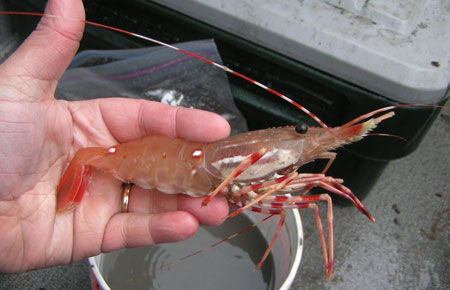
A new study says levels of toxins responsible for paralytic shellfish poisoning are well above the Food and Drug Administration’s limit in the Haines area. One researcher says further testing of commercial crab and shrimp from the area could kill the region’s fisheries.
Bruce Wright, a senior scientist with the Aleutian Pribilof Islands Association, said the PSP situation has been dire in Alaska for years, but the new findings suggest it’s getting worse. Wright said levels of the toxin that causes PSP are higher and more prevalent than ever before.
According to the study, samples were collected in May and June of this year in Chilkoot Inlet, Taiyasanka Harbor and Viking Cove. All species tested exceeded the FDA limit of 80 micrograms, per 100 grams. Dungeness crab from Taiyasanka Harbor tested the highest for PSP at 810 µg/100g.
“Some of the animals concentrate the toxins, and one pathway is through bivalves: clams, mussels, scallops, oysters,” Wright said.
But crabs are a little different. The toxins, which originate in algae, concentrate in the guts or viscera, not the meat. Shellfish affected by the poison don’t look, smell or taste any different from healthy ones. Once ingested, it can be deadly to both humans and wildlife. Symptoms include tingling in the lips, mouth and extremities and can progress to dizziness and shortness of breath. According to the state, death can occur in as little as two hours in severe cases. Cooking or freezing shellfish does not get rid of PSP.
In the Dungeness crab and shrimp Wright tested, high levels of PSP were found in the guts, which people mostly don’t eat, he said. If the crab or shrimp are cleaned before consumption, the meat is safe to eat. On the commercial end, live crab is not tested for PSP in Alaska before it is sold. Wright said if it was tested, the live crab fishery in northern Southeast Alaska would cease to exist.
“They should be tested,” Wright said. “These hotspots should be tested, or they should have non-live crab fishery. That’s what the regulations should require.”
Longtime Haines crabber Terry Pardee disagrees. Pardee said some of his customers cook the crab whole and eat everything, including the guts.
“And as far as I know everyone is still alive,” he said.
Pardee isn’t denying that PSP exists, but says, “There’s been no evidence whatsoever linking anybody that afflicted by, or died (from), PSP from eating Dungeness crab.”
George Scanlan is the shellfish permit coordinator for Food Safety and Sanitation in the Department of Environmental Conservation. He said the department does test live Dungeness crab, but only the processed ones that have been eviscerated. Scanlan said when it comes to live commercial crab, it’s a case of consumer beware because the department doesn’t have regulatory oversight.
“Our guidance basically to folks is that if they are to consume Dungeness crabs that are not tested, we strongly recommend that they clean out the butter,” Scanlan said.
Many factors contribute to whether the toxin makes an appearance or not, and so knowing when and where the shellfish will have toxins, if at all, is impossible to predict.
But Wright maintained that there is no stopping PSP. Monitoring is one answer to curbing the number of people who get sick, as well as taking stock of when and how bivalves are harvested.
He suggests more monitoring of algae blooms that harbor PSP would be a good start for protecting the public. But people who harvest bivalves to eat fresh do so at their own risk.
